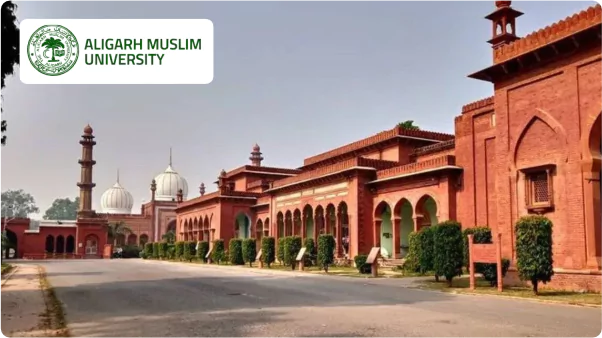
Top 5 Central Universities in India You Need to Know in 2026
Education in India is a vast and varied field, reflecting the country’s rich diversity and cultural heritage. The nation is home to various educational institutions that cater to every academic interest and professional aspiration. Among these institutions, universities play a crucial role, serving as the cornerstone for higher education, research, and innovation.
Central universities, in particular, stand out within this academic landscape. These institutions are established by an Act of Parliament and fall under the Department of Higher Education in the Ministry of Education. Renowned for their excellence in teaching, research, and cultural development, these universities set benchmarks in educational standards and are often considered prestigious.
The universities play an instrumental role in shaping the future of the nation by providing high-quality education and producing graduates who are well-prepared to contribute to various sectors of the economy. In this blog, we will discuss about top 5 central universities in India 2026, knowing which central universities are leading in education can guide students and educators in making informed decisions, ensuring they align with institutions that best meet their academic and professional goals.
What is a Central University?
A central university in India is a public university established by an Act of Parliament and directly funded by the Government of India. These universities operate autonomously with a focus on excellence in teaching and research. Here’s a breakdown of key characteristics:
Established by Parliament: Central universities are created through legislation passed by the Indian Parliament.
Central Funding: The Government of India directly funds these universities, ensuring financial stability and resource allocation.
Autonomy: They have a significant degree of autonomy in setting their curriculum, conducting research, and governing their affairs. This allows them to be more flexible and responsive to changing needs.
Focus on Excellence: Central universities aim to be leaders in their respective fields, offering high-quality education and attracting top faculty and students.
Criteria for Ranking
The ranking of top central universities in this blog considers several key factors:
Academic Reputation: The perceived quality and rigor of each university’s teaching and learning environment.
Faculty Qualifications: The expertise and research credentials of the teaching staff.
Research Output: The quantity and quality of research publications and projects.
Infrastructure: The adequacy of physical and technological facilities.
Student Facilities: Availability of student housing, clubs, and societies that enrich campus life.
Placement Records: The success rate of students in securing employment post-graduation.
Top Central Universities in India in 2026
#1. Jawaharlal Nehru University (JNU)

Established in 1969, Jawaharlal Nehru University (JNU) in New Delhi is one of India’s top universities. Named after India’s first Prime Minister, JNU was founded to promote a holistic educational approach that includes learning and research. JNU is a UGC recognized university. It is known for its unique academic structure promotes an interdisciplinary approach, encouraging students to explore beyond their immediate disciplines. It has consistently been at the pinnacle of academic excellence and innovation. JNU has received numerous NAAC A++ accreditation for contributing to higher education, including high rankings in the NIRF. The university’s research initiatives are driven by a commitment to solving real-world problems. JNU offers MBA, MA, MSc, Btech, etc. It also offers doctoral program. JNU’s faculty and students regularly contribute to scholarly articles, participate in international conferences, and collaborate with prestigious global institutions, underscoring the university’s role as a leader in pioneering research.
#2. Jamia Millia University
Jamia Millia Islamia (JMI), located in New Delhi, is a renowned central university in India. Founded in 1920, it played a crucial role in India’s independence movement. Over the years, JMI has grown into a leading institution, recognized by the UGC and accredited with an NAAC A++ grade for its academic excellence. The university offers a wide range of undergraduate, postgraduate, and doctoral programs, including B.Tech, M.Tech, M.Sc, BA LLB, LLM, MJMC, and BA. Whether your interest lies in engineering, law, journalism, or other fields, JMI provides quality education in a dynamic learning environment. Known for its commitment to inclusivity and social responsibility, JMI produces graduates who excel in various industries. With a strong emphasis on academic rigor and cultural heritage, Jamia Millia Islamia stands as a top choice for students seeking holistic education and a vibrant campus life.

#3. Banaras Hindu University (BHU)

Founded in 1916 by Pandit Madan Mohan Malaviya, Banaras Hindu University (BHU) is one of India’s oldest and most prestigious universities. Located in the holy city of Varanasi, BHU is steeped in cultural and educational heritage, reflecting a blend of ancient Indian traditions and modern academic practices. It is recognized by UGC and accredited by NAAC with A grade. BHU has significantly contributed to academics and society through pioneering research and influential alumni.
The university has been at the forefront of agriculture, science, technology, and social sciences research. Its scholars and researchers have contributed extensively to policy-making, social reforms, and the developing of innovative technologies in India. BHU offers BA, BSc, MA, MBA, MCA, LLM, etc. It also prides itself on promoting a sense of social responsibility among its students, encouraging them to participate in community service and developmental initiatives.
#4. Aligarh Muslim University (AMU)

Founded in 1920, Aligarh Muslim University (AMU) was founded in the year 1875 by Sir Syed Ahmed Khan. This transformation from a college to a university marked a significant milestone in advancing education. AMU is a highly reputed institution and a symbol of cultural and educational heritage. It is deeply ingrained in India’s social and historical fabric, having played a important role in its intellectual and cultural development.
AMU is a UGC recognized university and accredited by NAAC with an A+ grade. It is also known for its comprehensive academic environment encompassing various faculties and departments. The university is particularly renowned for its Theology, Life Sciences, and Fine Arts programs. It offers various undergraduate, postgraduate B.Sc. (Hons.), MBA, BA, MA, MBBS, etc. The alumni of AMU have made important contributions in India and globally, embodying the university’s ethos of service and leadership
#5. University of Delhi (DU)

The University of Delhi, commonly referred to as DU, was established in 1922 in the capital city of New Delhi. With a humble beginning with just three colleges and 750 students, DU has become one of India’s largest and most prestigious universities. Over the years, DU has influenced India’s education sector. Delhi University is a UGC recognized university center for academic training and research and an innovation hub.
Due to its high-quality education, this university has been accredited with an A+ grade by NAAC. DU offers several undergraduate and postgraduate courses like BA, BA honors, BCom, etc. Most of the student opt delhi university for BBA courses. The university’s emphasis on developing a research-oriented curriculum helps it attract top-tier faculty and enthusiastic students eager to contribute to their fields.
Importance of Central universities in India
Central universities in India play a important role in the country’s higher education system. Here are some of the key reasons why they are important:
- Academic Excellence: These universities are renowned for their high academic standards. They often attract the best faculty and the brightest students, which contributes to a rich academic environment. These institutions frequently lead in research and innovation.
- Diverse Programs: They offer a wide range of courses in different fields such as engineering, sciences, commerce, arts and social sciences. This diversity allows students from different backgrounds to pursue their interests and career goals.
- Research and Development: These universities are major hubs for research in India. They receive significant funding from the government to conduct research that can contribute to the nation’s development. This research is often in collaboration with international universities and research institutes.
- Affordable Education: Being government-funded, these universities provide quality education at a much lower cost compared to private institutions. This makes higher education accessible to a larger section of society.
- Social Equity: These universities have policies in place to ensure representation from all sections of society, including reserved seats for underrepresented communities. This promotes social equity and inclusion.
- Cultural Integration: With their nationwide reach and central funding, these universities bring together students and faculty from across the country, promoting cultural exchange and national integration.
- Global Recognition: Degrees from these universities are widely recognized both in India and abroad, enhancing the employability of graduates in the global job market.
These universities contribute to the intellectual growth of their students and play a crucial role in the social and economic development of the country.
CUET Exam: A Gateway to Central Universities
The full form of CUET is Common University Entrance Test (CUET). It has been introduced as a standardized national entrance exam. This exam is designed for admission to various undergraduate programs across central and participating universities. The CUET exam is managed and conducted by the National Testing Agency. CUET aims to provide a single-window opportunity for students to secure admission to universities nationwide, ensuring greater accessibility, transparency, and fairness in the admissions process. This test allows students to prove their competence in important subjects related to their future academic pursuits, playing a significant role in the university admission process.. The CUET is integral in standardizing entry requirements and reducing the dependency on multiple exams.
How CUET Simplifies the Admission Process?
CUET simplifies the admission process by offering several advantages:
- Standardized Assessment: CUET ensures a fair and objective evaluation of students’ abilities based on common criteria.
- Reduced Burden: Students now only need to prepare for one exam, eliminating the need to take multiple entrance exams for different universities.
- Wider Choice: With CUET, you can apply to various Central Universities with a single application, expanding your options.
What to Remember About CUET and Central Universities
- Not All Central Universities Use CUET: While most Universities utilize CUET for admissions, a few may still conduct separate entrance exams. Always check the specific admission process for your desired university.
- Exam Format and Syllabus: The CUET exam format and syllabus can vary depending on the chosen program. Research the specific requirements for your desired program and stream.
- Preparation is Key: Although CUET streamlines the process, dedicated preparation is still essential for securing admission to your dream Central University.
Innovations and Trends in Education at Central Universities
Central universities are leading the way in modernizing education by embracing new and innovative approaches. Instead of sticking strictly to old-school methods, these institutions are integrating digital technology into their classrooms. This involves utilizing online platforms to make education more accessible and flexible.
These universities are expanding their horizons beyond local boundaries by forming partnerships with institutions around the world. These international collaborations enrich the educational experience by exposing students to diverse culture and global perspectives, preparing them to work in an increasingly interconnected world.
These universities are breaking down the traditional barriers between different fields of study. They offer interdisciplinary programs that combine subjects like science, technology, engineering, arts, and mathematics. This approach equips students with a broad range of modern skills and knowledge, making them versatile and adaptable to various challenges they might face in the future.
Central universities are transforming education to make it more relevant and responsive to the needs of today’s world, ensuring students are well-prepared for the challenges of the global job market.
At Last
The central universities discussed are highly reputed educational institutions; they are symbol of knowledge, culture, and progress. They reflect the aspirations of a nation committed to academic excellence and cultural richness. Each university website offers a wealth of information about their programs, faculty expertise, and campus life. Many universities host open days, providing a firsthand glimpse into their academic offerings, facilities, and student life. This is the best opportunity to ask questions and get a feel for the university environment. Several universities conduct online webinars on specific programs or research areas. Attending these webinars can provide valuable insights from faculty members and help you make informed decisions. To know more about these universities, you can visit their official websites.
